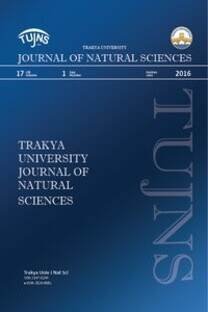Ecology of the garden dormouse (Eliomys quercinus) inn the alpine habitat
Meşe faresinin (Eliomys quercinus) ekolojik esnekliği ona Akdeniz topraklarında deniz seviyesinden başlayan ve 2000m yüksekliğe kadar uzanan alanlarda yaşama olanağı verir. Bu çalışmada bu türün alpin habitatlardaki bazı ekolojik karakterleri sunulmuştur. Ormanlar içinde iyi gelişmiş bir çalılık örtü ve yoğun kayalıklarla kaplı bir alan meşe fare populasyonlarını barındırma açısından elverişli habitatlar iken geniş otluk alanlar uygun bir habitat değildir. Alpin bölgelerde hüküm süren ağır hava koşulları nedeniyle meşe faresinin Mayıs ayından Eylül (ya da Ekim) ayına kadar süren sadece 5-6 aylık bir aktif devresi vardır. Bu kısa aktif devre ona yalnız yılda bir kere üreme fırsatı verir. Kış ölüm oranı Alplerde meşe faresinin yaşamını etkileyen en önemli faktördür. Buna karşın yırtıcılardan kaynaklanan ölüm pek önemli değildir.
Anahtar Kelimeler:
fareler, Quercus, kış zorlukları, kış uykusu, Gliridae, hayvan ekolojisi, Eliomys quercinus, habitat seçimi, ölüm oranı, kış ölümü, habitatlar
Meşe faresinin (Eliomys quercinus) alpin habitatlardaki ekolojisi
The ecological flexibility of the garden dormouse (Eliomys quercinus) enables it to live from the sea level in the Mediterranean area up to 2000 m a.s.l. Here we present data on some ecological characteristics of this species in alpine habitats. A dense rocky cover and a well developed shrub layer inside woodlands are favourable to the presence of good populations of dormice, while a continuous herbaceous layer is unfavourable. Due to the severe weather condition of the alpine areas, the garden dormouse is active only for 5-6 months, from May to September (October); this short period allows only one yearly reproduction. Winter mortality is the main factor that affects the survival of dormice on the Alps, while predation is negligible.
Keywords:
mice, Quercus, winter hardiness, hibernation, Gliridae, animal ecology, Eliomys quercinus, habitat selection, mortality, winter kill, habitats,
___
- 1. Storch, G. Eliomys quercinus (Linnaeus, 1766) - Gartenschläfer. In: Niethammer, J. & F. Krapp (Ed). Handbuch der Saügetiere Europas. Band 1/I: Rodentia I. Wiesbaden: Akademische Verlagsgesellschaft: 208-225, 1978. 2. Amori, G., Cantini, M. & Rota, V. Distribution and conservation of Italian dormice. Hystrix Italian Journal of Mammalogy (n.s.) 6 (1-2): 331-336 (1995), 1994. 3. Patriarca, E. & Debernardi, P. Insectivora, Chiroptera, Lagomorpha, Rodentia and Carnivora of the Gran Paradiso National Park: Checklist and preliminary ecological characterization. Ibex J.M.E. 4: 17-32., 1997. 4. Le Louarn, H. & Spitz, F. Biologie et écologie du lérot Eliomys quercinus L. dans les Hautes-Alpes. La Terre et la Vie. 28 (4): 544-563, 1974. 5. Baudoin, C., Mann, C. & Taillard, C. Comparaison de la structure sociale et de l’organisation spatiale du Lérot dans les Alpes et dans le Jura. Coll. Nat. CNRS Biologie des Populations: 593-599, 1986. 6. Bertolino S., Viano C. & Currado, I. Population dynamics, breeding patterns and spatial utilisation of the garden dormouse Eliomys quercinus in an Alpine habitat. Journal of Zoology, 253: 513-521, 2001. 7. Mann, C.S. Etude du cycle annuel, de la démographie, de l’écologie et du comportement vis à vis de l’espace du lérot Eliomys quercinus dans le Briançonnais. Graduation thesis, University of Paris VI, 1976. 8. Bertolino, S., Currado, I., Azzollini, R. & Viano, C. Social organization, home range and movement of the Garden dormouse Eliomys quercinus. Nat. Croat. 6 (3): 303-312, 1997. 9. Bertolino S., Currado I. & Viano C. Weight growth and activity season length in the garden dormouse Eliomys quercinus: variation related to sex and reproductive condition. IIIth European Congress of Mammalogy, Abstract book, p. 72, 1999. 10. Baudoin, C. & Abdi, H. Une typologie des ages chez le lerot Eliomys quercinus (L.), au moyen de l’analyse factorielle des correspondances. Rev. Ecol. (Terre et Vie) 35: 173-181, 1981. 11. Kahmann, H. & Staudenmayer, T. Über das Fortpflanzungsgeschehen bei dem Gartenschläfer Eliomys quercinus (Linnaeus, 1766). Säugetierkundl. Mitt. 18: 97-114, 1970. 12. Baudoin, C. Organisation sociale et communications intraspécifiques d’un hibernant. Graduation thesis, University of Franche-Comté, Vol. I., 1980. 13. Vaterlaus, C. Der Gartenschläfer (Eliomys quercinus L.). Ökologie, Populationsstruktur und die Verbreitung in der Schweiz. Ph D Thesis, University of Basel, 1998. 14. Morris, P. Dormice. In: Corbet, G. & S. Harris (Ed). Handbook of British Mammals. London: Blackwell Science, 1991. 15. Scaravelli, D. & Aloise, G. Predation on dormice in Italy. Hystrix Italian Journal of Mammalogy (n.s.) 6 (1-2): 245-255 (1995), 1994. 16. Bertolino, S. & Dore, B. Food habits of the Stone Martens Martes foina in "La Mandria" Regional Park (Piedmont Region, Northen Italy). Hystrix Italian Journal of Mammalogy 1-2 (N.S.): 105-111, 1995. 17. Macdonald, D. & Barret, P. Mammals of Britain & Europe. Harper Collins Publishers, 1993. 18. Southern, H.N. & Lowe, V.P.W. The pattern of distribution of prey and predation in tawny owls territories. J. Anim. Ecol. 37: 75-97, 1968. 19. King, C.M. Interactions between woodland rodents and their predators. Symp. Zool. Soc. Lond. 55: 219-247, 1985.
- ISSN: 1302-647X
- Yayın Aralığı: Yıllık
- Başlangıç: 2018
- Yayıncı: -
Sayıdaki Diğer Makaleler
Daily torpor in the edible dormouse Glis glis
Ebru BURULDAĞ, Cengiz KURTONUR
Dormouse associations in Slovenia-A new approach to an old tradition
Boris KRYSTUFEK, Werner HABERL
Weight changes of the comon dormouse (Muscardinus avellanarius L.) during the year in Lithuania
The vocal repertoire of Graphiurus parvus, and comparisons with other species of dormice
Rainer HUTTERER, Gustav PETERS
Microgeographical non-metrical cranial diversity of the fat dormouse (Glis glis L.)
Compartmentalization of body of a fat dormouse Glis glis
Winter activity in the forest dormouse Dryomys nitedula
